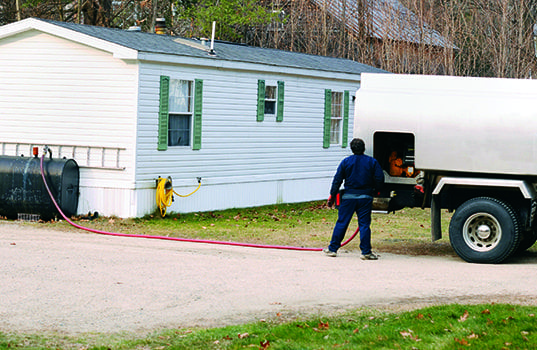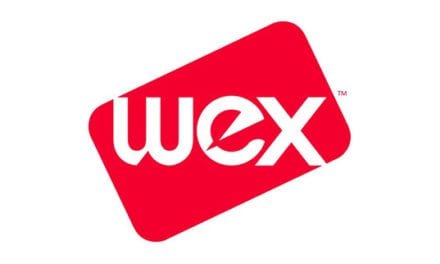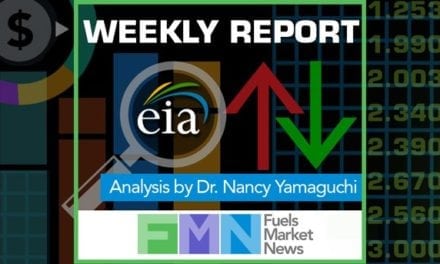Excerpted from “This Week in Petroleum,” February 2, 2017
Despite most of the country experiencing, on average, a relatively warm winter so far, higher crude oil prices have contributed to higher heating oil prices and strong export demand for propane has resulted in higher prices for that fuel as well. Last winter, unseasonably warm temperatures and falling crude oil prices combined to keep expenditures for winter heating fuels lower than historical averages. The latest Energy Information Administration (EIA) Short-Term Energy Outlook (STEO) projects U.S. average heating oil and propane expenditures to increase 36% and 23%, respectively, compared with last winter, but both are still projected to be lower than average expenditures over the past 10 winters. Heating oil expenditures are expected to be $475 (26%) lower than the average expenditures of the previous 10 winters, and propane $14 (0.7%) lower.
To date, the winter of 2016 – 2017 has been comparatively mild. U.S. average heating degree days (HDDs) from October – December were 164 (11%) fewer than the previous 10-year average for the same period. Barring a significant change in weather patterns from today through March, this winter is expected to have a total of 273 fewer HDDs than the 10-year average. U.S. inventories of winter heating fuels—propane and distillate, which includes heating oil—started the winter of 2016 – 2017 above their five-year averages (what is considered normal for that time of year). Heading into February, inventories of both fuels remain above their five-year averages, but propane inventories are now declining because of higher exports while distillate inventories are increasing.
In the last week of January, the spot price for Dated Brent crude oil averaged $55 per barrel (/b), $23/b higher than the same time last year. On January 30, the U.S. average residential heating oil price was $2.63 per gallon (gal), 55 cents/gal higher than at the same time last year. U.S. residential propane prices, which are a function of both crude oil and natural gas prices, have also trended higher, up 37 cents/gal compared with the same time last year to $2.39/gal on January 30 (Figure 1).

Increased propane production, combined with an expansion in U.S. infrastructure to export and store propane, resulted in U.S. propane inventories that were higher than the five-year average during 2015 and 2016. However, the growth in propane storage infrastructure has slowed, and the historical average now accounts for years with this greater storage capacity and higher inventory levels. A higher historical average and strong demand for U.S. propane from the global export market have resulted in a recent narrowing of propane inventory levels versus the five-year average. U.S. propane exports for the past four weeks averaged 1.09 million barrels per day (b/d), 384,000 b/d more than the same period last year. U.S. propane inventories for the week ending January 27 were 58.8 million barrels, just 3.3 million barrels above the five-year average and 16.1 million barrels less than the same time last year.
Total distillate inventories are 11 million barrels higher than the same time last year and have been above the five-year average level since the summer of 2015. High U.S. refinery runs in 2015 and 2016 kept distillate inventories higher than historical norms, and the trend has continued into this winter. For the week ending January 27, U.S. total distillate inventories were 170.7 million barrels, 33.9 million barrels above the five-year average (Figure 2).

Although less pronounced in scale and speed compared with propane, the market for heating oil is also changing. The long-term trend of standardization to the lower allowed maximum sulfur content in heating oil had resulted in lower inventory levels, as fewer types of products were needed in storage and in a larger share of ultra-low-sulfur diesel (ULSD) in total distillate inventories. This trend is the result of state changes in the U.S. Northeast, specifically in Petroleum Administration for Defense District (PADD) 1A New England and PADD 1B Central Atlantic. This region has the highest concentration of homes heated by heating oil and includes the major storage hub of New York Harbor, the delivery point for the New York Mercantile Exchange (NYMEX) ULSD futures contract.
Over the past 10 years, PADD 1B has shifted its total distillate makeup from around 20% ULSD to over 85% ULSD. However, several states in PADD 1A have yet to make the full change to the 15 parts per million (ppm) of sulfur standard of ULSD. The makeup of PADD 1A distillate inventory, therefore, has shifted relatively modestly from nearly 20% 10 years ago to nearly 50% currently. The share of ULSD in total PADD 1A distillate inventories is likely to increase further as the remaining states in PADD 1A transition to the new lower-sulfur specification in the coming years (Figure 3).










